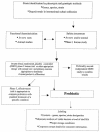Potential uses of probiotics in clinical practice
- PMID: 14557292
- PMCID: PMC207122
- DOI: 10.1128/CMR.16.4.658-672.2003
Potential uses of probiotics in clinical practice
Abstract
Probiotics are defined as live microorganisms that, when administered in adequate amounts, confer a health benefit on the host. There is now mounting evidence that selected probiotic strains can provide health benefits to their human hosts. Numerous clinical trials show that certain strains can improve the outcome of intestinal infections by reducing the duration of diarrhea. Further investigations have shown benefits in reducing the recurrence of urogenital infections in women, while promising studies in cancer and allergies require research into the mechanisms of activity for particular strains and better-designed trials. At present, only a small percentage of physicians either know of probiotics or understand their potential applicability to patient care. Thus, probiotics are not yet part of the clinical arsenal for prevention and treatment of disease or maintenance of health. The establishment of accepted standards and guidelines, proposed by the Food and Agriculture Organization of the United Nations and the World Health Organization, represents a key step in ensuring that reliable products with suitable, informative health claims become available. Based upon the evidence to date, future advances with single- and multiple-strain therapies are on the horizon for the management of a number of debilitating and even fatal conditions.
Figures
References
-
- Adams, M. R., and P. Marteau. 1995. On the safety of lactic acid bacteria from food. Int. J. Food Microbiol. 27:263-264. - PubMed
-
- Aiba, Y., N. Suzuki, A. M. Kabir, A. Takagi, and Y. Koga. 1998. Lactic acid-mediated suppression of Helicobacter pylori by the oral administration of Lactobacillus salivarius as a probiotic in a gnotobiotic murine model. Am. J. Gastroenterol. 93:2097-2101. - PubMed
-
- Arimochi, H., T. Kinouchi, K. Kataoka, T. Kuwahara, and Y. Ohnishi. 1997. Effect of intestinal bacteria on formation of azoxymethane-induced aberrant crypt foci in the rat colon. Biochem. Biophys. Res. Commun. 238:753-757. - PubMed
-
- Arunachalam, K., H. S. Gill, and R. K. Chandra. 2000. Enhancement of natural immune function by dietary consumption of Bifidobacterium lactis (HN019). Eur. J. Clin. Nutr. 54:263-267. - PubMed
-
- Aso, Y., H. Akaza, T. Kotake, T. Tsukamoto, K. Imai, and S. Naito. 1995. Preventive effect of a Lactobacillus casei preparation on the recurrence of superficial bladder cancer in a double-blind trial. The BLP Study Group. Eur. Urol. 27:104-109. - PubMed
Publication types
MeSH terms
LinkOut - more resources
Full Text Sources
Other Literature Sources


